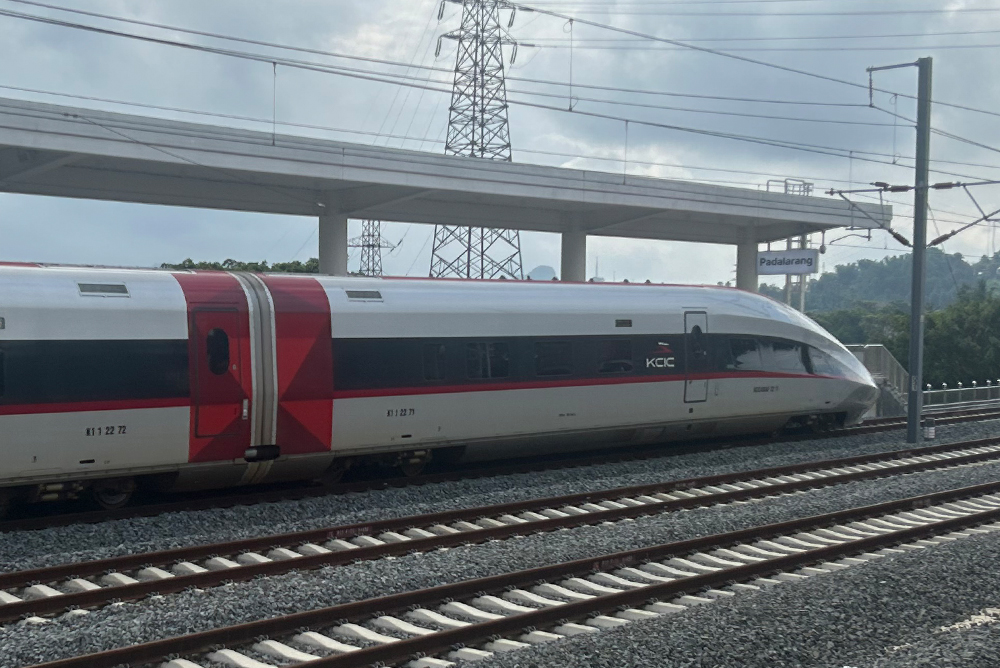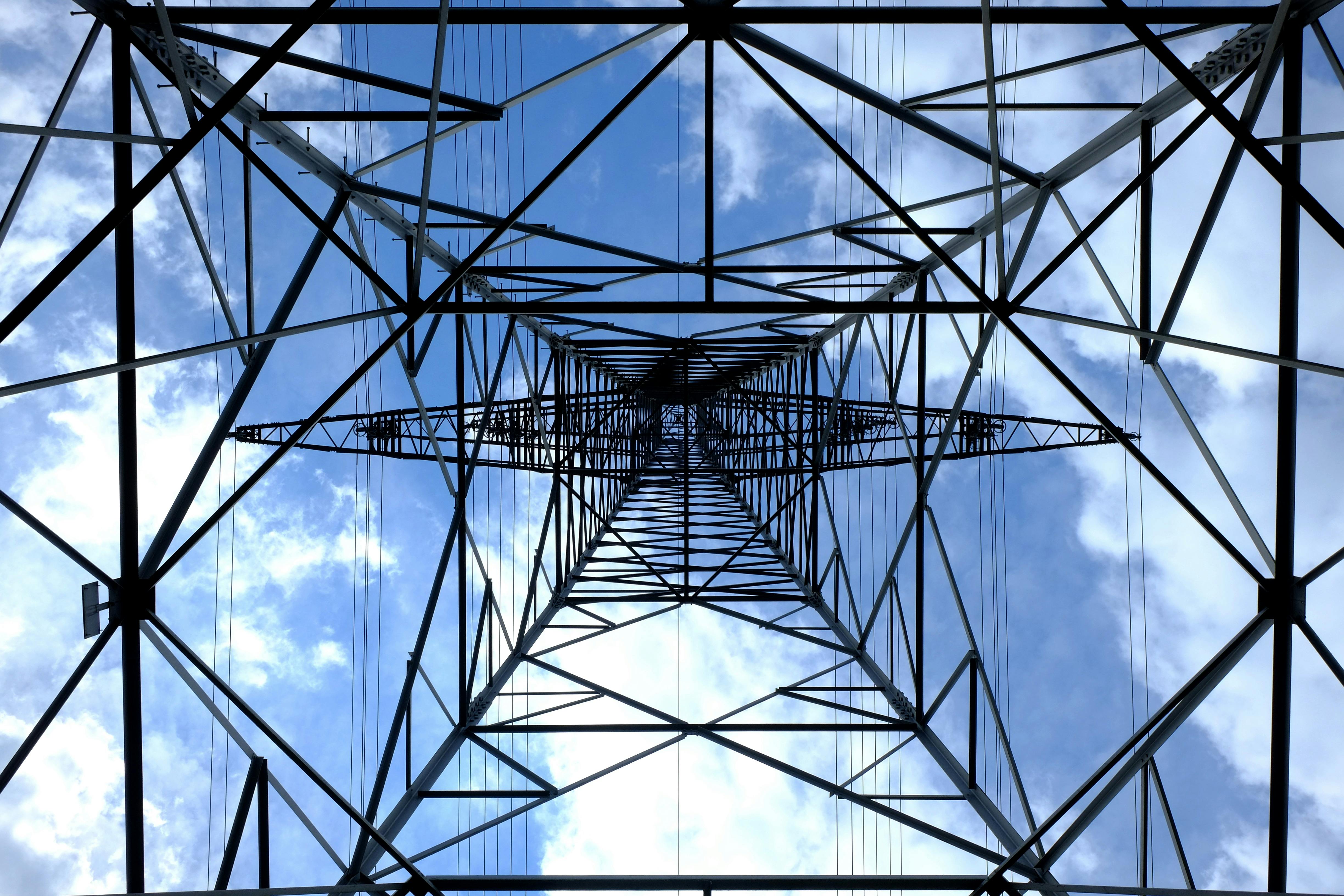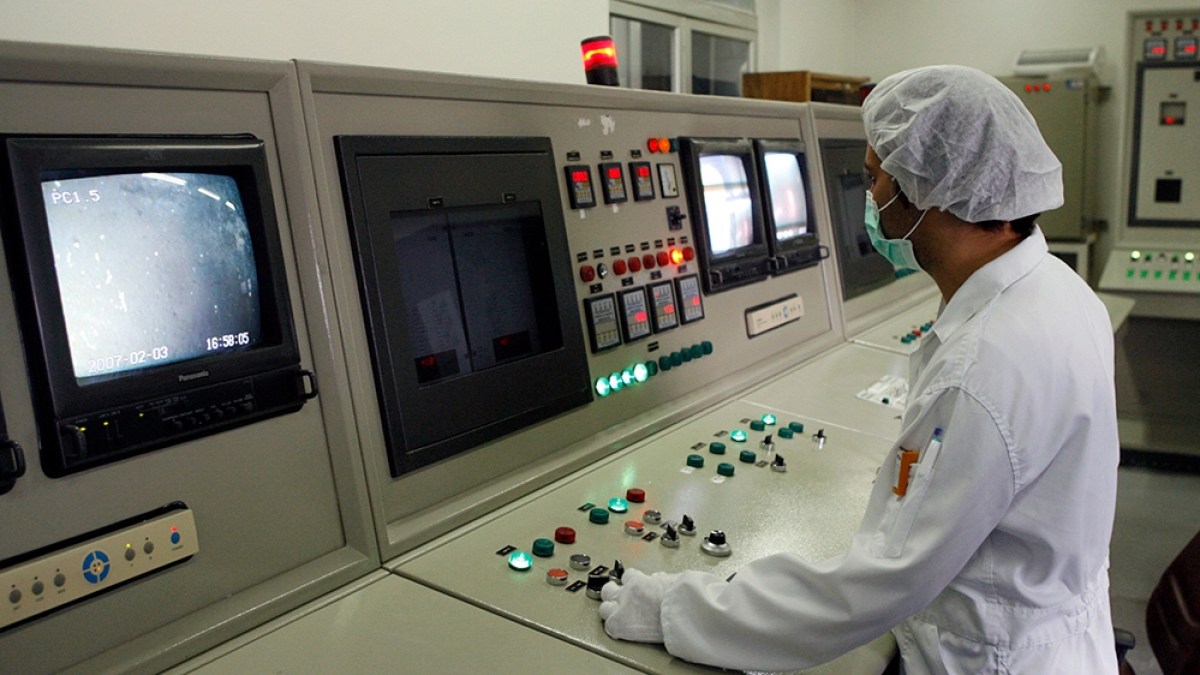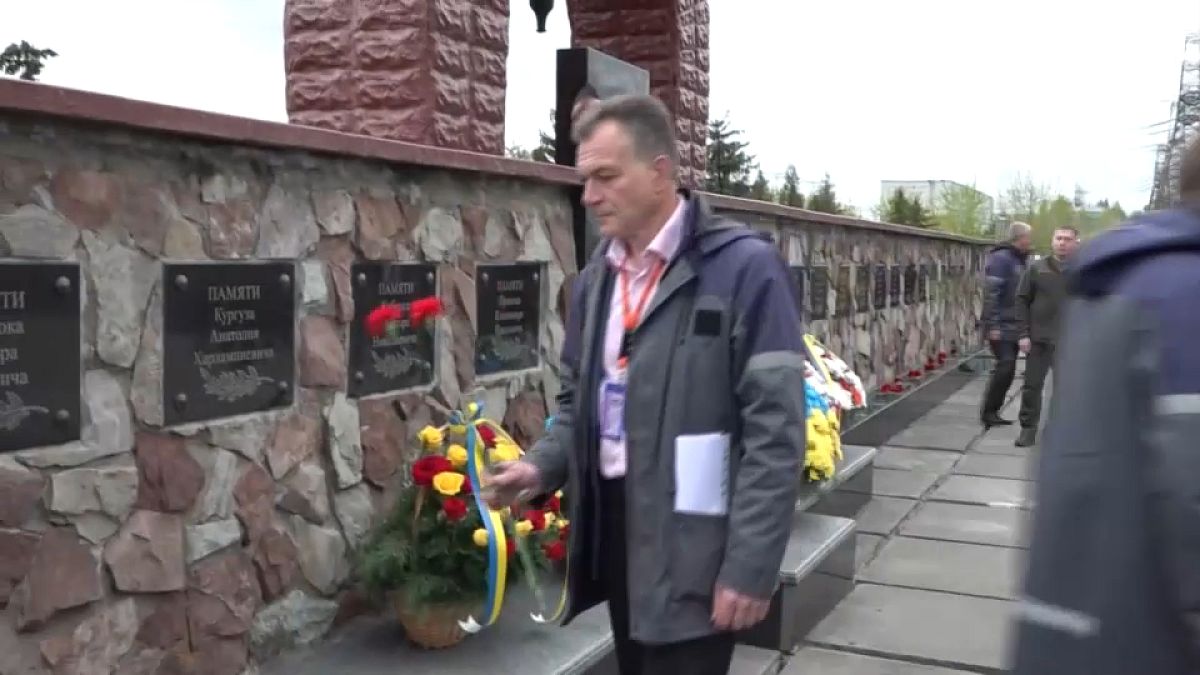California
California’s High-Speed Rail Dreams Could Go “Whoosh”

Riding Indonesia’s new bullet train Whoosh is like taking a peek into California’s high-speed rail’s future, writes columnist Joe Mathews. And it doesn’t look promising. Photo of Whoosh train by author.
The good news is that California will almost certainly have a high-speed rail line someday.
The bad news is that it may look a lot like “Whoosh.”
Whoosh is the name of the new high-speed rail line that opened last October on the Indonesian island of Java. Its existence is a breakthrough—Whoosh is the first bullet train in Southeast Asia and the Southern Hemisphere. Similarly, California’s train could be the first truly high-speed service in North America. (Amtrak’s Acela and Florida’s Brightline don’t count—they don’t surpass 150 miles per hour.)
I rode Whoosh during a reporting trip to Java in February. It was disappointing, in ways that may preview how Californians are likely to feel about the high-speed rail we eventually get.
Most stories about the possibilities for California high-speed rail look at proven, efficient bullet trains in Europe and East Asia. I myself have written about the glories of high-speed rail systems in Germany and Taiwan. Riding Whoosh was a very different experience.
Whoosh is the by-product of ambitions by the administration of President Joko Widodo to build a high-speed rail route traversing the 600 miles of the island of Java—from the mega-city of Jakarta in the west to Surabaya in the east. California’s official high-speed rail plans are of similar ambition, extending 600 miles from San Francisco and Sacramento in the north to San Diego in the south. Both systems will use similar technologies and have promised the same top speed—350 kilometers, or 220 miles, per hour.
But neither rail ambition, Indonesian nor Californian, seems likely to be achieved in our lifetimes. Whoosh is only a very partial realization of a trans-Java high-speed rail: It extends just 88 miles, from Jakarta to the outskirts of the city of Bandung—roughly the distance from L.A. to Santa Barbara. Similarly, California voters approved high-speed rail in 2008 on the promise they’d be zipping from L.A. to the Bay in less than three hours by 2020. Currently, only a first segment—171 miles from Merced to Bakersfield—is under construction, and even that isn’t scheduled to be operational until 2030.
I boarded Whoosh early on a weekday morning. The red train was shiny and new, and inside the car, seating was spacious and comfortable. But there were few other passengers. Even with subsidized fares that made my ticket the equivalent of $18, many trains were pretty empty. News reports say Whoosh is already losing money, as many high-speed rail systems worldwide do.
Why isn’t Whoosh more popular? One reason echoes a failure of California’s own high-speed rail plans—the first segment of this train doesn’t take you to the centers of the biggest cities.
What I learned in Java was that, in high-speed rail as in other things, you get what you pay for.
In Jakarta, you don’t board the train in the city center but at Halim Station, on the city’s southeast side. My taxi ride there from Central Jakarta took 45 minutes. Halim is next to a smaller domestic airport—Jakarta’s version of Burbank. But the train doesn’t go into the airport, and one can’t walk easily from terminals, or even surrounding neighborhoods, to the station, because it involves crossing highways.
The train ride itself, from Jakarta to Bandung, was fast and uneventful. It lasted only 45 minutes—much better than the three hours the trip would take by car.
However, on the other end of Whoosh, connections were even more fraught. The train doesn’t go near the center of Bandung. Instead, it dropped me at Tegalluar station, well to the south of Bandung.
There I found myself surrounded by open land and a large soccer stadium. To get to central Bandung, where I was to interview local government members and visit a school, I would need to spend another 45 minutes in the taxis. The two taxi rides—within Jakarta and greater Bandung—took 90 minutes, twice the amount of time I spent on the train ride.
On my return trip from Bandung to Jakarta, I tried an alternative path. I boarded a special feeder train—which ran slowly on diesel engines—from central Bandung to a different Whoosh station. That trip took 22 minutes. After Whoosh delivered me back to Halim station in southeast Jakarta, I boarded Jakarta’s Metro to return to where I was staying in Central Jakarta. That ride took 70 minutes.
California’s approach to high-speed rail suffers from a similar failure to connect. The first segment remains entirely within the Central Valley, not penetrating even the outer edges of the Bay Area or Southern California. That first segment’s endpoints, Merced and Bakersfield, have limited public transportation options; moving on to further destinations would require navigating slow transit connections, or accessing a car.
In California, as in Indonesia, it’s unlikely that either rail plan will ever produce a robust and deeply connected rail system. The obstacle is the same in both places: lack of public money.
Neither Indonesia’s nor California’s government is willing to pay the high costs of a great high-speed rail system. So, both projects are dependent on money from outside the state.
Whoosh’s funding came from China’s Belt and Road Initiative, Xi Jinping’s highly touted but largely failed infrastructure loan program. (Chinese entities own a big share of Whoosh as a result). Meanwhile, California, despite state bond funds, needs the federal government to make high-speed rail happen. And Washington is an unstable supporter. The Biden administration recently sent an infusion of $3.1 billion. The Trump administration previously took money away.
Worse still, both Indonesia and California have seen cost overruns and big delays on their first train segments—scandals that discourage further investment. Whoosh was more than $1 billion over budget, and four years late, on its first $7.2 billion segment. California’s first segment is estimated to cost $33 billion—as much as the estimated cost of the entire system when voters approved it in 2008. Now the entire system’s price tag is $128 billion, with completion still decades away.
What I learned in Java was that, in high-speed rail as in other things, you get what you pay for. And if your government won’t spend the money required to build robust and well-connected rail systems, you won’t get much.

California
At Least 16 People Died in California After Medics Injected Sedatives During Police Encounters | KQED

It was impossible for the AP to determine the exact role injections may have played in many of the 94 deaths involving sedation that reporters found nationally during the investigation’s 2012–2021 timeframe. Few of those deaths were attributed to the sedation and authorities rarely investigated whether injections were appropriate, focusing more often on the use of force by police and the other drugs in people’s systems.
The idea behind the injections is to calm people who are combative, often due to drugs or a psychotic episode, so they can be transported to the hospital. Supporters say sedatives enable rapid treatment while protecting frontline responders from violence. Critics argue that the medications, given without consent, can be too risky to be administered during police encounters.
California was among the states with the most sedation cases, according to the investigation, which the AP did in collaboration with FRONTLINE (PBS) and the Howard Centers for Investigative Journalism.
Midazolam was given in 15 of the 16 California cases, all by paramedics outside of a hospital. The drug can cause respiratory depression, a side effect experts say may be dangerous when mixed with police restraint tactics that restrict breathing — or with alcohol or certain drugs that a person may already have consumed.
The 16th case involved a man injected with a similar class of drug, lorazepam, while police restrained him at a hospital in San Diego.
Two emergency room doctors in San Diego told the AP they have discussed switching to ketamine, which supporters say is safer and works faster than midazolam. But the doctors said negative headlines about ketamine, especially after deaths and misuse in Colorado, stalled that idea.
California
CalFresh May 2024 payment: When will food stamps be paid in California next month?

We’re coming up on the fifth month of the year as we enter May, and Californian residents are awaiting the new round of payments from CalFresh, which will be distributed based on the last digit of their case number. Here’s the crucial details…
As Californians await their benefits, we must understand the deadlines and timeline in order to make their food purchases in the state-level version of the Supplemental Nutrition Assistance Program (SNAP).
Caitlin Clark gets excited, encouraged as she leads the Special Olympics team in Southern California
CalFresh is California‘s adaptation of the federal Supplemental Nutrition Assistance Program, which provides monthly benefits to low-income individuals and families, as long as they are eligible.
The benefits are designed to assist with the purchase of nutritious foods, which are distributed through an Electronic Benefits Card (EBT). CalFresh benefits can be used as a debit card at selected supermarkets to purchase the required foods.
It is important to clarify that this is not a loan and repayment is not required. The amount you receive, which depends on factors such as household size and monthly expenses, is intended to improve the health and well-being of low-income Californians.
CalFresh must be spent on approved foods and it cannot be spent on hot food, toiletries, alcohol, cigarettes, fuel and other non-food substances.
Who is eligible for CalFresh benefits?
The criteria for CalFresh Payments eligibility are among the simplest, but you must follow these guidelines in order to receive your benefits.
You must have been a California resident for at least the last 10 years.
The maximum household income level will be less than or equal to 200% of the federal poverty level. For a single person, the maximum gross income allowed is approximately up to $2,430, while a family of eight can have up to $8,428.
Have an Adjusted Net Income, which is used to determine the monthly benefit amount. Elderly and disabled households use net monthly income instead of gross income for eligibility evaluation.
If you are an able-bodied adult with no dependents (ABAWD), between the ages of 18 and 49, who is able to work and has no dependents, you are also eligible, but you can only receive three months of CalFresh payments within a 36-month period, unless a specific exemption applies.
If the household includes someone who is elderly (age 60 or older) or disabled, the net monthly income limit will be used for eligibility checks.
When are food stamps paid in California during May 2024?
CalFresh payments are disbursed through an Electronic Benefits Transfer (EBT) card within the first 10 days of each month. Payments on schedule for May 2024 are:
- May 1: The last digit ends in 1.
- May 2: The last digit ends in 2.
- May 3: The last digit ends in 3.
- May 4: The last digit ends in 4.
- May 5: The last digit ends in 5.
- May 6: The last digit ends in 6.
- May 7: The last digit ends in 7.
- May 8: The last digit ends in 8.
- May 9: The last digit ends in 9.
- May 10: The last digit ends in 0.
California
Here's the Real Reason PG&E Rates Are Skyrocketing in California

California now holds the ignominious prize for the highest electricity rates in the nation, except Hawaii. How did we get into this predicament?
Because the California Public Utilities Commission — the five-member agency appointed by Governor Gavin Newsom that regulates the prices, service and reliability of private energy utilities — has failed to do its job.
There are other government entities that hand out cookies to energy companies without a care for who pays the bill. But the buck stops at the Public Utilities Commission to protect utility customers.
When a private utility like PG&E decides it needs to build new infrastructure — say, to protect against wildfires — it’s the commission that determines if the infrastructure is necessary, if the utility’s proposed costs for that infrastructure are fair, and if better and cheaper alternatives exist.
The commission enjoys limited scrutiny by the courts. Decisions made by other state agencies can be appealed to Superior Court. But only an appellate court can hear commission appeals, and taking that case is discretionary. This limited judicial review means that the Public Utilities Commission essentially answers to the governor alone.
As a former commission president, I know what keeping energy prices down requires: a sharp pencil to control relentless spending requests from utilities that allow them to generate more profits, adherence to legal mandates that require it to protect ratepayers and allow only “just and reasonable” costs and the backbone to just say no to the utilities’ unceasing demands that customers pay for programs that are ineffective or unnecessarily expensive.
None of this is happening, and Californians should be outraged.
Last November, the commission authorized a historic rate increase — more than $2.56 billion for PG&E’s 2023-2026 general rate case spending estimates. PG&E applied to the commission to charge its customers for the costs of running its gas and electricity businesses, including new infrastructure, system maintenance, and employee and management salaries.
That rate increase hits in stages. The commission let PG&E charge its customers immediately for the first $1.3 billion, painfully hitting in January’s bills. But that’s not the end to commission-permitted rate increases: The utility will collect $716 million more in 2024, $359 million in 2025 and $204 million in 2026.
The commission allowed these increases despite its administrative law judge’s initial decision finding that PG&E’s evidence justified a much smaller rate hike. (The commission employs administrative judges to independently vet whether or not utilities have proved that they are entitled to charge their customers for their costs.)
The administrative law judge’s decision hinged on whether PG&E’s spending was “just and reasonable” — the legal prerequisite for approving any utility cost. Instead, politically appointed commissioners overruled the judge and gave PG&E the vast bulk of what it wanted despite what the facts support.
Before the ink on PG&E’s unprecedented 2023 rate increase was dry, the utility came back, asking the commission to order its customers to pay over $4 billion more for Diablo Canyon nuclear power plant costs, power purchases from electricity generators and infrastructure upgrades for “energization” efforts.
PG&E wants $691 million of that upfront — paid now — before the Public Utilities Commission even evaluates whether those costs are just and reasonable.
Adding insult to injury, in its March 12 decision, the commission handed PG&E yet another increase of $516 million — to take effect immediately. This time the commission dispensed with pesky legal requirements for evidentiary hearings, testimony or proof of PG&E’s asserted costs. By not even attempting to evaluate the reasonableness of the utility’s demands, commissioners set a new low in disregarding the law, which allows the commission to increase rates only after it holds a hearing that includes testimony under oath and cross-examination of PG&E’s witnesses.
In its decision, the commission admitted that granting PG&E half a billion up front, based only on PG&E’s word, “departs from the general requirement to raise rates only after the costs are determined reasonable.” Despite PG&E’s admission that its original $5.7 billion expense estimate actually only totaled $2.7 billion, commissioners approved the increase anyway, only timidly admonishing that “PG&E should be more transparent at the outset to assist with decision-making.”
What should have occurred?
Formal hearings, with PG&E’s witnesses testifying under oath about the true amounts of their asserted costs. The commission should have followed the law that requires PG&E to prove that its costs are “just and reasonable” — before forcing its customers to pay more. The law requires public, rules-based fact determinations about what money is really needed to provide safe and reliable service versus what constitutes frivolous, unnecessary or profit-plumping projects.
The commission blithely maintains that it will review PG&E’s actual costs later — years from now. If unreasonable costs are found, it will order refunds of the money PG&E took from its customers.
But PG&E will almost certainly fight such refunds by scaring future commissioners into inaction, claiming that “the markets” have expected them to keep the money so it can’t be taken away.
Kowtowing to PG&E despite the evidence and the facts — or in this latest case, raising rates without any evidence or facts — shows the Public Utilities Commission’s utter indifference to the hardships these rate increases impose on California’s families and businesses.
Now, a new commission scheme is set to create a “fixed charge” on top of current pay-as-you-use prices, which would be marginally reduced, only for residential customers, under the plan.
On March 27, an administrative law judge published a proposed decision that, if approved in May, will impose a new fixed $24.18 monthly charge on residential customers not eligible for low-income discounts. The commission touts this proposal as a win because it set the charge significantly lower than the $70-$90 the utilities initially proposed. But the new charge still exceeds twice the national average for similar charges.
Fixed fees are the start, not the end, of more rate increases because the commission doesn’t prohibit the fixed charge from increasing whenever PG&E wants. The plan lacks safeguards against utility double-dipping, so it will be hard to tell whether the costs embedded in this new fixed charge are duplicated in other cost-recovery requests. Even PG&E’s low-income customers are not protected — they already pay more than the average customer in the Sacramento Municipal Utility District.
The Public Utilities Commission’s rubberstamping of unproven, unwarranted, unjust electricity costs must stop. It is up to the state Legislature to inject sanity into the regulatory system and protect California families and businesses from ruinous, undeserved rate increases.
Thankfully, legislators have introduced AB1999 to stop this increase and cap any fixed charge at $5 for low-income customers and $10 for other customers. AB2054 would stop the revolving door of former commissioners moving to jobs with utilities and scrutinize utility funds, and SB938 would stop ratepayers from paying for utility lobbying and advertising, among other reforms.
Passing these bills would be important first steps to reining in California’s rogue Public Utilities Commission and halting runaway energy rates.
More robust oversight by the Legislature is needed. Without it, you can expect your energy bills to continue to skyrocket.
Loretta Lynch is a former president of the California Public Utilities Commission and an attorney in San Francisco.
-

 Kentucky1 week ago
Kentucky1 week agoKentucky first lady visits Fort Knox schools in honor of Month of the Military Child
-

 World1 week ago
World1 week agoIf not Ursula, then who? Seven in the wings for Commission top job
-

 Politics1 week ago
Politics1 week agoTrump trial: Jury selection to resume in New York City for 3rd day in former president's trial
-

 World1 week ago
World1 week agoEU leaders weigh Lebanon partnership in response to Middle East crisis
-

 Politics1 week ago
Politics1 week agoFormer Wisconsin Democratic Rep. Peter Barca launches congressional comeback bid
-
/cdn.vox-cdn.com/uploads/chorus_asset/file/24016887/STK093_Google_02.jpg)
/cdn.vox-cdn.com/uploads/chorus_asset/file/24016887/STK093_Google_02.jpg) Technology1 week ago
Technology1 week agoGoogle fires 28 employees after sit-in protest over Israel cloud contract
-

 World1 week ago
World1 week agoIsraeli attack on nuclear sites to prompt tit-for-tat, pursuing nukes: Iran
-

 News1 week ago
News1 week agoProsecutors say Trump violated gag order 7 times: Live updates














